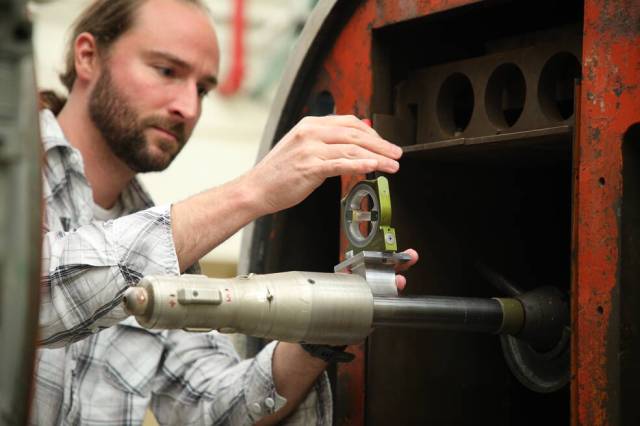The Body in Space
What happens to the human body during spaceflight?
Spaceflight affects bones, muscles, vision, and more. Life on the International Space Station unfolds in close quarters, which could affect astronauts’ moods. Travel to the Moon, Mars, and beyond will require new systems to provide medical care far from Earth. Learn more about the changes humans may undergo during spaceflight, as well as the steps NASA takes to keep astronauts healthy and safe.
Read More
Research in Space
Studies on the space station help prepare future crew for trips into deeper space.
NASA will soon send astronauts to the Moon, and will one day send astronauts to Mars. To get mission-ready, NASA seeks to learn all they can about how human physiology and psychology changes while astronauts live and work on the space station. Learn more about how scientists seek to maintain the health and well-being of crew members during and after their missions.
Read More
Research on Earth
NASA conducts Earth-bound simulations of life in space.
Simulated space missions conducted on Earth help NASA examine crew health and team dynamics without launching into space. Some simulations happen in closed laboratory settings, others take place in remote regions like Antarctica. Using such missions, scientists can study in detail and in larger populations how humans adapt to challenges astronauts may encounter on missions to the Moon and Mars.
Read More
Extended Stays in Space
Learn more about the record-holders for the longest continuous spaceflights by U.S. astronauts.
Frank Rubio, Mark Vande Hei, Scott Kelly, Christina Koch, and Peggy Whitson have spent an extended amount of time in space, helping to pave the way for even longer, future exploration missions. Their missions help researchers better understand how the human body adapts to the extreme environment of space for more distant missions to the Moon, Mars, and beyond.
Read More
Collaborate with Us
Learn how you can help NASA prepare for future spaceflight.
Are you developing innovative ways to keep astronauts healthy and mission-ready as space travel expands to the Moon, Mars, and beyond? Partner with NASA’s Human Research Program (HRP)! Check out information on NSPIRES and internships, and explore our how-to guides for working with us.
Read More
Food in Space
Astronauts require food that is nutritious, appetizing, long-lasting, easy to make, and more. We strive to continuously improve the quality of space food and to satisfy the dietary needs of crew members on increasingly longer and more distant spaceflight missions.
Steps to Mars
Explore the steps we are taking to prepare humans for long-duration spaceflight. We aim to combine insights from Earth-based simulations of life in space with research conducted on the space station and on future Artemis missions to get NASA ready to send crew to deep space.
Space Gardening
Astronauts will need to grow — rather than solely bring — plants into space on trips to Mars and elsewhere. We test methods for nurturing crops in microgravity so that crew members can enjoy the fruits of gardening on deep space missions.
What will life be like on missions to deep space?
Take a peek into the lives of crew on a simulated mission to Mars. Confined inside NASA's Human Exploration Research Analog (HERA), these crew answer questions from students around the world. They share how they maintain their privacy, build strong group dynamics, cope with missing their families, adapt to unexpected circumstances, and more.
Learn more


























































